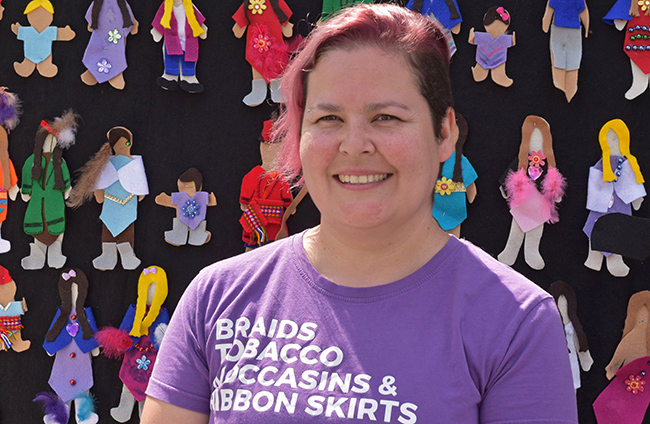Watching for clues to keep women safe

By Kelly Anne Smith
NIPISSING FIRST NATION- Skepticism swirls around the National Inquiry into Murdered and Missing Indigenous Women and Girls. While the commission advances it mandates, albeit slowly, there is on-going progress in the fight to keep Indigenous women and girls safe.
Amanda Bellefeuille points to the active work of the Northeastern Ontario Research Alliance on Human Trafficking (NORAHT). Bellefeuille is a frontline social worker with the Ojibway Women’s Lodge, a secure short- term residence for women and children.
Bellefeuille says NORAHT is committed to hearing stories and suggestions during the community engagement sessions. “The project is studying human trafficking in the North East region. They were asking service providers if they noticed any patterns. It’s a collaboration to stop the flow of trafficking. It’s troubling when we hear news of people moving further north and coming into our area to procure girls and women to go into that trade.”
The first meeting was held June 26 in North Bay. A Sudbury meeting was held June 28. Upcoming sessions are in Sault Ste Marie on Oct. 4; Manitoulin Island on Oct. 5; Kirkland Lake on Oct. 11 and Cochrane Oct. 12.
NOHRAT’s September newsletter updates on the North Bay and Sudbury community engagement sessions. North Bay participants felt that data was lacking from police about previously trafficked persons. The participating service providers called for training and more frontline resources. Sudbury participants called for a local committee to be struck to create a dedicated shelter and a public education campaign. NOHRAT states short-term funding is available for trafficked persons through Victim Services programs.
Bellefeuille suggests the National Inquiry into Murdered and Missing Indigenous Women and Girls is not living up to its responsibility as an effective forum for change. She says there might be a communication breakdown with families having a hard time being heard. “Government sources say nobody is coming forward. It pushes off responsibility which is causing a collapse of the board that is supposed to be working on this.”
“People aren’t being informed. People are having a hard time getting the stories of their family members listened to. One meeting was held on short notice and families had to travel hours to get to the panel. And people are apprehensive of travelling to Thunder Bay with the recent issues of racism and violent attacks.”
A 21 -yr old man, Dylan Moonias, was pulled from the Neebing-McIntyre Floodway in Thunder Bay on Sept 23. Days later the Office of the Independent Police Review held a public meeting to discuss allegations of racism into policies, practices and attitudes of the Thunder Bay Police Service relating to death and missing person investigations of Indigenous people.
Bellefeuille says the commission needs to get moving in an organized fashion. “It’s as simple as having a panel of people that are contacting the families that we are already aware of. And through social media, we can put a call out to family members who want to give statements and give ideas on how to improve the system. The Commission is putting up a lot of roadblocks and barriers for themselves and delaying the whole process. ”
The inquiry’s Chief Commissioner has said the federal government’s Information technology, contracting and hiring rules have slowed the down the process. The National Inquiry into Missing and Murdered Indigenous Women and Girls will be in Thunder Bay for one week in December. The commission will release an interim by November 1, 2017.
A campaign to create a visual representation of the 1200 known Missing and Murdered Indigenous Women and Girls in Canada continues to bring attention to the National Inquiry and the issue of safety for Indigenous women.
Bellefeuille says the Faceless Dolls campaign has grown across Canada. “These Missing and Murdered Indigenous Women are faceless to the general public. It’s not something people want to look at or really pay attention to. Nor is it being paid attention to by the authorities who need to do proper investigations. These felt dolls are a small representation of the women who never come home.”


